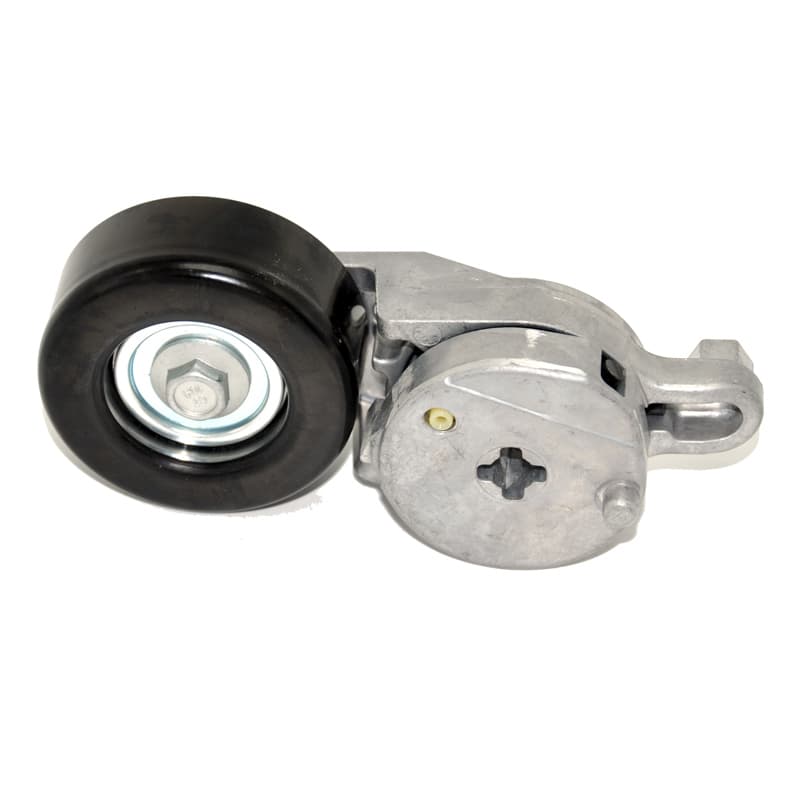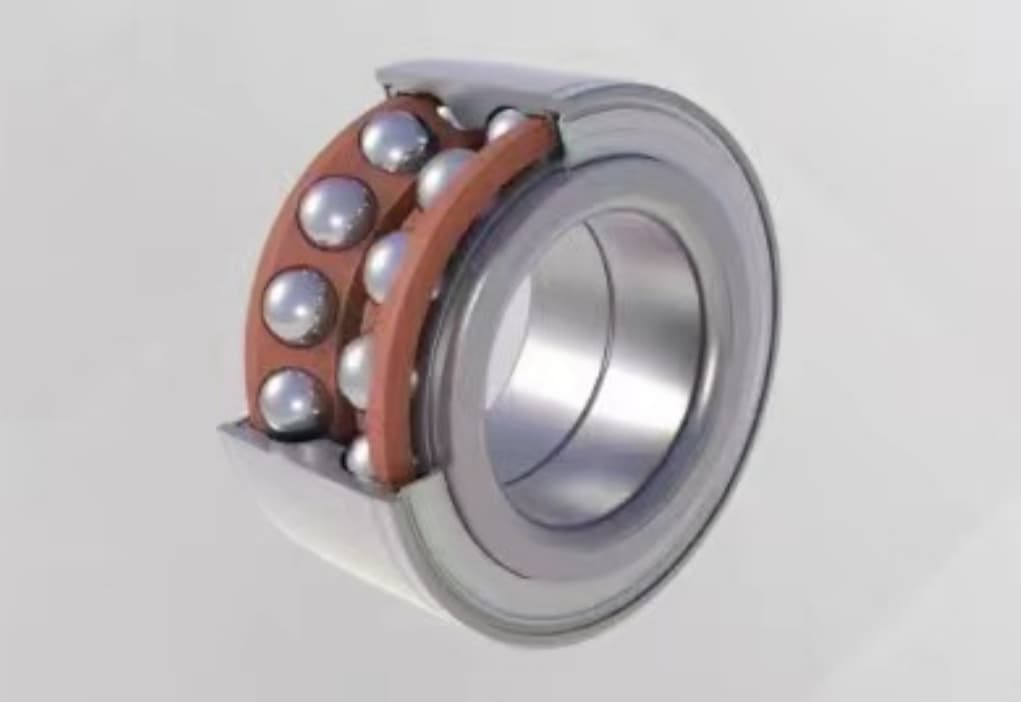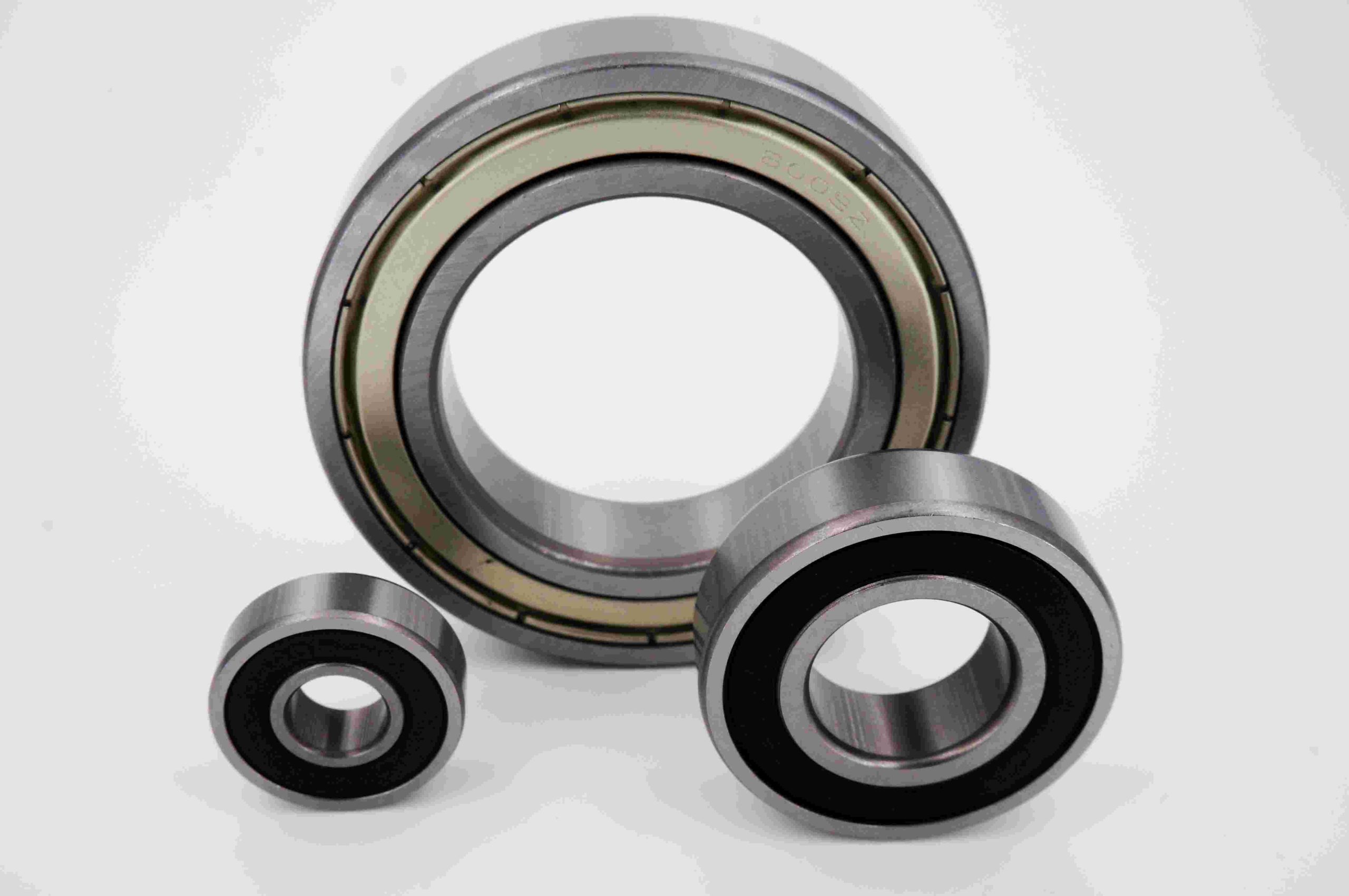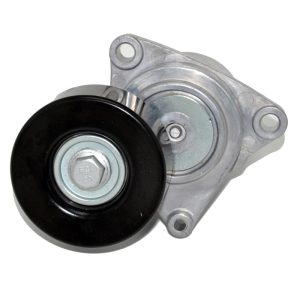Στο χώρο της αυτοκινητοβιομηχανίας και των βιομηχανικών μηχανημάτων, ο ρόλος των τροχαλιών τάνυσης και των τροχαλιών αδρανείας είναι κρίσιμος, αλλά συχνά παραβλέπεται. Τα εξαρτήματα αυτά, αν και μικρά σε μέγεθος, διαδραματίζουν ουσιαστικό ρόλο στη λειτουργικότητα και τη μακροζωία διαφόρων συστημάτων, ιδίως σε μηχανισμούς με ιμάντα. Κατανοώντας τι εξαρτήματα τροχαλίας τεντωτήρα και τροχαλίας αδράνειας είναι, πώς λειτουργούν και ποια είναι η σημασία τους είναι ζωτικής σημασίας για οποιονδήποτε ασχολείται με τη συντήρηση, την επισκευή ή το σχεδιασμό μηχανολογικών συστημάτων. Αυτό το άρθρο εμβαθύνει στις ιδιαιτερότητες αυτών των εξαρτημάτων, διερευνώντας τους τύπους, τις λειτουργίες και τον αντίκτυπο που έχουν στη συνολική απόδοση του συστήματος.
Τα βασικά: Τεντωτήρας και μέρη τροχαλίας τροχαλίας Idler
Πριν αναφερθούμε στις λεπτομέρειες, είναι σημαντικό να κατανοήσουμε τις βασικές έννοιες των τροχαλιών τεντωτήρα και αδρανείας. Και τα δύο εξαρτήματα είναι αναπόσπαστα για την ορθή λειτουργία των συστημάτων με ιμάντα, τα οποία είναι κοινά στους κινητήρες αυτοκινήτων και σε διάφορα βιομηχανικά μηχανήματα.
- Τροχαλία τεντωτήρα: Η τροχαλία τεντωτήρα είναι ένα εξάρτημα που έχει σχεδιαστεί για να διατηρεί τη σωστή τάση ενός ιμάντα σε ένα σύστημα με ιμάντα. Είναι συνήθως ελατηριωτή ή υδραυλική, επιτρέποντάς της να προσαρμόζεται αυτόματα για να αντισταθμίζει τη φθορά και την επιμήκυνση του ιμάντα με την πάροδο του χρόνου. Διατηρώντας τη σωστή τάση, η τροχαλία τεντωτήρα εξασφαλίζει την ομαλή και αποτελεσματική λειτουργία του ιμάντα, αποτρέποντας την ολίσθηση, τον θόρυβο και την πρόωρη φθορά.
- Τροχαλία τροχαλίας: Από την άλλη πλευρά, μια τροχαλία αδράνειας εξυπηρετεί διαφορετικό σκοπό. Χρησιμοποιείται για να καθοδηγεί ή να ανακατευθύνει τον ιμάντα προς μια συγκεκριμένη κατεύθυνση. Αν και δεν συμβάλλει στη διατήρηση της τάσης, η τροχαλία αδράνειας εξασφαλίζει ότι ο ιμάντας ακολουθεί τη σωστή διαδρομή γύρω από διάφορα εξαρτήματα του κινητήρα, όπως η γεννήτρια, η αντλία νερού ή η αντλία υδραυλικού τιμονιού. Οι τροχαλίες αδράνειας είναι συνήθως σταθερές στη θέση τους και δεν μπορούν να ρυθμίσουν την τάση.
Η σημασία των εξαρτημάτων του τεντωτήρα και της τροχαλίας του τροχαλίατροχού
Τόσο τα εξαρτήματα του εντατήρα όσο και τα εξαρτήματα της τροχαλίας αδρανείας είναι ζωτικής σημασίας για την αποτελεσματική λειτουργία των συστημάτων με ιμάντα. Μια δυσλειτουργία ή αστοχία σε οποιοδήποτε από αυτά τα εξαρτήματα μπορεί να οδηγήσει σε σημαντικά προβλήματα, όπως απώλεια ισχύος, υπερθέρμανση του κινητήρα ή ακόμη και πλήρη αστοχία του συστήματος.
- Εξασφάλιση της σωστής τάσης του ιμάντα: Ο πρωταρχικός ρόλος της τροχαλίας τάνυσης είναι να διατηρεί τη σωστή ένταση του ιμάντα. Ένας χαλαρός ιμάντας μπορεί να γλιστρήσει, προκαλώντας απώλεια ισχύος στα κινούμενα εξαρτήματα, ενώ ένας υπερβολικά σφιχτός ιμάντας μπορεί να οδηγήσει σε υπερβολική φθορά του ιμάντα και των ίδιων των τροχαλιών. Η τροχαλία τεντωτήρα προσαρμόζεται αυτόματα ώστε να διατηρεί την τάση του ιμάντα εντός του βέλτιστου εύρους, εξασφαλίζοντας ομαλή λειτουργία και παρατείνοντας τη διάρκεια ζωής του ιμάντα.
- Καθοδήγηση της ζώνης: Ο ρόλος της τροχαλίας αδράνειας στην καθοδήγηση του ιμάντα είναι εξίσου σημαντικός. Κατευθύνοντας τον ιμάντα κατά μήκος της σωστής διαδρομής, η τροχαλία αδράνειας εξασφαλίζει ότι ο ιμάντας κινεί σωστά κάθε εξάρτημα του συστήματος. Μια λάθος ευθυγραμμισμένη ή κατεστραμμένη τροχαλία αδράνειας μπορεί να προκαλέσει απόκλιση του ιμάντα από την προβλεπόμενη διαδρομή του, οδηγώντας σε ανομοιόμορφη φθορά, θόρυβο ή ακόμη και πλήρη αστοχία του ιμάντα.
- Μείωση της φθοράς: Τόσο οι τροχαλίες τεντωτήρα όσο και οι τροχαλίες αδρανείας παίζουν καθοριστικό ρόλο στη μείωση της φθοράς του ιμάντα και άλλων εξαρτημάτων. Διατηρώντας τη σωστή τάση και οδηγώντας σωστά τον ιμάντα, αυτές οι τροχαλίες συμβάλλουν στην ομοιόμορφη κατανομή του φορτίου στον ιμάντα, μειώνοντας την καταπόνηση και παρατείνοντας τη διάρκεια ζωής ολόκληρου του συστήματος.
- Πρόληψη αστοχιών του συστήματος: Μια βλάβη είτε στον τεντωτήρα είτε στην τροχαλία αδράνειας μπορεί να έχει σοβαρές συνέπειες. Μια σπασμένη ή κατεστραμμένη τροχαλία μπορεί να προκαλέσει ολίσθηση ή θραύση του ιμάντα, οδηγώντας σε απώλεια ισχύος σε κρίσιμα εξαρτήματα όπως η γεννήτρια ή η αντλία νερού. Σε έναν κινητήρα αυτοκινήτου, αυτό μπορεί να οδηγήσει σε βλάβη της μπαταρίας, υπερθέρμανση ή ακόμη και βλάβη του κινητήρα. Σε βιομηχανικά μηχανήματα, μια αποτυχημένη τροχαλία μπορεί να οδηγήσει σε δαπανηρές διακοπές λειτουργίας και επισκευές.
Τύποι εξαρτημάτων τροχαλιών τεντωτήρα και τροχαλίας τροχαλίας Idler
Υπάρχουν διάφοροι τύποι εξαρτημάτων τροχαλίας τάνυσης και τροχαλίας αδρανείας, καθένας από τους οποίους έχει σχεδιαστεί για να ανταποκρίνεται σε συγκεκριμένες απαιτήσεις ανάλογα με την εφαρμογή. Η κατανόηση των διαφορών μεταξύ αυτών των τύπων είναι απαραίτητη για την επιλογή της σωστής τροχαλίας για ένα συγκεκριμένο σύστημα.
- Χειροκίνητοι τεντωτήρες: Οι χειροκίνητοι τεντωτήρες απαιτούν περιοδική ρύθμιση για τη διατήρηση της σωστής τάσης του ιμάντα. Αυτοί οι τεντωτήρες χρησιμοποιούνται συνήθως σε παλαιότερα οχήματα και βιομηχανικά μηχανήματα, όπου τα αυτοματοποιημένα συστήματα δεν είναι εφικτά. Το κύριο πλεονέκτημα των χειροκίνητων τεντωτήρων είναι η απλότητα και η οικονομική τους απόδοση, αλλά απαιτούν τακτική συντήρηση για να διασφαλιστεί η σωστή λειτουργία.
- Αυτόματοι τεντωτήρες: Οι αυτόματοι τεντωτήρες είναι ο πιο συνηθισμένος τύπος που χρησιμοποιείται στα σύγχρονα οχήματα και μηχανήματα. Αυτοί οι τεντωτήρες χρησιμοποιούν έναν μηχανισμό με ελατήριο για να διατηρούν σταθερή τάση στον ιμάντα, ρυθμίζοντας αυτόματα τη φθορά και την επιμήκυνση του ιμάντα. Οι αυτόματοι τεντωτήρες είναι πιο βολικοί από τους χειροκίνητους τεντωτήρες, καθώς απαιτούν ελάχιστη έως καθόλου συντήρηση. Ωστόσο, μπορεί να είναι πιο ακριβοί και μπορεί να απαιτούν πιο πολύπλοκη εγκατάσταση.
- Υδραυλικοί τεντωτήρες: Οι υδραυλικοί τεντωτήρες είναι ένας τύπος αυτόματου τεντωτήρα που χρησιμοποιεί υδραυλική πίεση για τη διατήρηση της τάσης του ιμάντα. Αυτοί οι τεντωτήρες χρησιμοποιούνται συχνά σε εφαρμογές υψηλών επιδόσεων ή βαρέως τύπου όπου ο ακριβής έλεγχος της τάσης είναι κρίσιμος. Οι υδραυλικοί τεντωτήρες προσφέρουν το πλεονέκτημα της ομαλότερης λειτουργίας και της καλύτερης απόσβεσης των δονήσεων του ιμάντα, αλλά είναι επίσης πιο πολύπλοκοι και ακριβοί από άλλους τύπους τεντωτήρων.
- Σταθερές τροχαλίες: Οι σταθερές τροχαλίες αδρανείας είναι ο πιο συνηθισμένος τύπος τροχαλίας αδρανείας, που χρησιμοποιείται συνήθως για την καθοδήγηση του ιμάντα προς μια συγκεκριμένη κατεύθυνση. Αυτές οι τροχαλίες τοποθετούνται σε σταθερό βραχίονα και δεν μετακινούνται ούτε ρυθμίζονται. Οι σταθερές τροχαλίες αδρανείας είναι απλές και αξιόπιστες, καθιστώντας τες κατάλληλες για τις περισσότερες εφαρμογές.
- Ρυθμιζόμενες τροχαλίες: Οι ρυθμιζόμενες τροχαλίες αδρανείας επιτρέπουν κάποιο βαθμό ρύθμισης της διαδρομής του ιμάντα. Αυτά τα εξαρτήματα του εντατήρα και της τροχαλίας αδρανείας είναι τοποθετημένα σε ένα βραχίονα που μπορεί να ρυθμιστεί για να αλλάξει η θέση της τροχαλίας, επιτρέποντας μικρές διορθώσεις στην ευθυγράμμιση του ιμάντα. Οι ρυθμιζόμενες τροχαλίες αδρανείας είναι χρήσιμες σε εφαρμογές όπου είναι απαραίτητη η ακριβής ευθυγράμμιση του ιμάντα, αλλά απαιτούν προσεκτική εγκατάσταση και ρύθμιση.
Συνήθη ζητήματα και συμβουλές συντήρησης
Όπως κάθε μηχανικό εξάρτημα, τα εξαρτήματα του τεντωτήρα και της τροχαλίας αδρανείας μπορεί να φθαρούν με την πάροδο του χρόνου ή να παρουσιάσουν προβλήματα που απαιτούν προσοχή. Η τακτική συντήρηση και επιθεώρηση είναι απαραίτητες για τη διασφάλιση της μακροζωίας και της αξιοπιστίας αυτών των εξαρτημάτων.
- Φθορά: Με την πάροδο του χρόνου, τα ρουλεμάν στις τροχαλίες τεντωτήρα και αδρανείας μπορεί να φθαρούν, οδηγώντας σε αυξημένη τριβή, θόρυβο και τελικά σε βλάβη. Η τακτική επιθεώρηση των τροχαλιών για σημάδια φθοράς, όπως ταλαντεύσεις, τριξίματα ή θόρυβοι τριξίματος, μπορεί να βοηθήσει στην έγκαιρη αντιμετώπιση των προβλημάτων πριν αυτά οδηγήσουν σε πιο σοβαρά προβλήματα.
- Κακή ευθυγράμμιση ιμάντα: Η κακή ευθυγράμμιση του ιμάντα είναι ένα συνηθισμένο πρόβλημα που μπορεί να προκαλέσει πρόωρη φθορά τόσο στον ιμάντα όσο και στις τροχαλίες. Η κακή ευθυγράμμιση μπορεί να προκληθεί από μια κατεστραμμένη ή φθαρμένη τροχαλία αδρανείας, ένα λυγισμένο στήριγμα ή από ακατάλληλη εγκατάσταση. Η διασφάλιση της σωστής ευθυγράμμισης όλων των τροχαλιών είναι ζωτικής σημασίας για την ομαλή λειτουργία του συστήματος.
- Αποτυχία τεντωτήρα: Ένας αποτυχημένος εντατήρας μπορεί να οδηγήσει σε χαλαρό ή υπερβολικά σφιχτό ιμάντα, οδηγώντας σε ολίσθηση, θόρυβο και υπερβολική φθορά. Τα σημάδια βλάβης του εντατήρα περιλαμβάνουν ασυνήθιστους θορύβους, υπερβολική κίνηση του ιμάντα ή ορατή ζημιά στο μηχανισμό του εντατήρα. Η άμεση αντικατάσταση ενός ελαττωματικού εντατήρα είναι απαραίτητη για την αποφυγή περαιτέρω ζημιών στο σύστημα.
- Κανονική αντικατάσταση: Τα εξαρτήματα του εντατήρα και της τροχαλίας αδρανείας, όπως και άλλα εξαρτήματα που έχουν υποστεί φθορά, πρέπει να αντικαθίστανται σε τακτά χρονικά διαστήματα για την αποφυγή απροσδόκητων βλαβών. Η τήρηση του συνιστώμενου από τον κατασκευαστή χρονοδιαγράμματος αντικατάστασης και η χρήση ανταλλακτικών υψηλής ποιότητας μπορεί να συμβάλει στη διασφάλιση της μακροζωίας του συστήματος.
Συμπέρασμα
Τα εξαρτήματα των τροχαλιών τάνυσης και των τροχαλιών αδρανείας μπορεί να είναι μικρά εξαρτήματα, αλλά ο ρόλος τους στην αποτελεσματική λειτουργία των συστημάτων με ιμάντα δεν μπορεί να υπερτιμηθεί. Διατηρώντας τη σωστή τάση του ιμάντα και οδηγώντας τον ιμάντα κατά μήκος της σωστής διαδρομής, αυτές οι τροχαλίες συμβάλλουν στην ομαλή και αξιόπιστη λειτουργία ενός ευρέος φάσματος μηχανικών συστημάτων. Η κατανόηση των διαφόρων τύπων τροχαλιών τεντωτήρα και τροχαλιών αδρανείας, των λειτουργιών τους και των κοινών προβλημάτων που μπορεί να προκύψουν είναι απαραίτητη για οποιονδήποτε εμπλέκεται στη συντήρηση ή το σχεδιασμό αυτών των συστημάτων. Η τακτική επιθεώρηση, η συντήρηση και η έγκαιρη αντικατάσταση αυτών των εξαρτημάτων είναι το κλειδί για την πρόληψη δαπανηρών βλαβών και τη διασφάλιση της μακροζωίας ολόκληρου του συστήματος.




